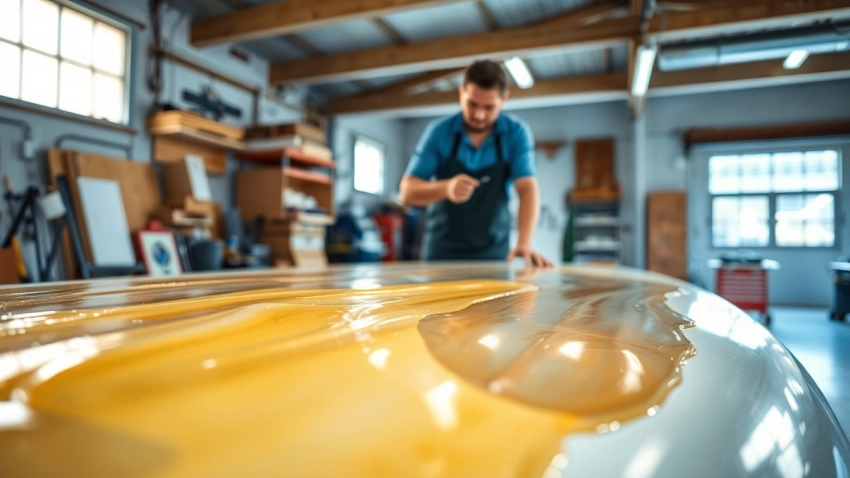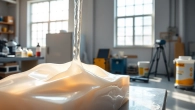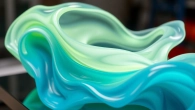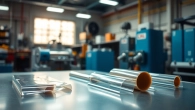
Understanding Laminating Resin: Applications and Best Practices
Introduction to Laminating Resin
Laminating resin is a type of synthetic resin primarily utilized for fabricating continuously reinforced composites. Renowned for its robust adhesion, high tensile strength, and versatility, laminating resin plays a crucial role in various industries, notably in marine, automotive, aerospace, and crafts. Understanding its properties, applications, and best practices helps professionals and hobbyists maximize its potential. This article serves as a comprehensive guide to laminating resin, delving into its types, properties, application techniques, and safety measures.
What is Laminating Resin?
Laminating resin is a synthetic polymer specifically engineered to bond and reinforce composite materials. Typically consisting of polyester or epoxy, it cures to form an enduring matrix that encapsulates reinforcing fibers, such as glass or carbon. This unique structure enhances the mechanical properties of the composite, making it ideal for applications requiring strength, durability, and resistance to environmental factors.
Common Types of Laminating Resin
There are several types of laminating resins, predominantly categorized into two main groups: polyester and epoxy. Each has specific characteristics that make them suitable for different uses.
- Polyester Laminating Resin: Known for its affordability and ease of use, polyester laminating resin is widely used in marine applications, including boat manufacturing. It offers good adhesion and a relatively quick curing time but is less chemically resistant than epoxy.
- Epoxy Laminating Resin: This type of resin is recognized for its superior mechanical properties, chemical resistance, and thermal stability. Though typically more expensive than polyester, epoxy laminating resin is favored for demanding applications, including aerospace and high-performance vehicle parts.
- Vinyl Ester Resins: Combining aspects of both polyester and epoxy, vinyl ester resins exhibit excellent mechanical properties and corrosion resistance, making them suitable for harsh environments.
Key Properties and Benefits
Laminating resin is treasured in the manufacturing sector for its myriad of advantageous properties:
- High Strength-to-Weight Ratio: Laminating resins create lightweight structures that do not compromise strength, resulting in efficient designs for various applications.
- Chemical Resistance: Many laminating resins exhibit resistance to solvents, acids, and NaOH, making them suitable for application in corrosive environments.
- Customizability: The ability to modify curing agents and fillers allows for the enhancement of specific characteristics in the resin, tailored to distinct applications.
- Durability: Once cured, laminating resins form a tough, durable material that withstands wear and environmental degradation.
Applications of Laminating Resin
The versatility of laminating resin facilitates its use across numerous industries, each with unique requirements and specifications.
Marine Industry Uses
The marine industry heavily relies on laminating resin for constructing boats and ships, as it offers waterproof and durable properties. Laminating resins provide essential adhesion between fiberglass cloth and surfaces, ensuring hull integrity and longevity. The use of laminating resin in the boat-building process enhances fuel efficiency and performance due to the lightweight nature of fiberglass composites. Moreover, its ability to be applied in vertical orientations without sagging is particularly beneficial for intricate designs.
Automotive and Aerospace Applications
In the automotive sector, laminating resin is used to produce lightweight parts that enhance vehicle performance and fuel efficiency. Applications range from body panels to structural components. In aerospace, laminating resins form crucial parts of aircraft where weight reduction is paramount for safety and efficiency. Specialized laminating resins are available to meet the stringent requirements of both industries, ensuring robustness and reliability under extreme conditions.
Art and Craft Projects
Laminating resin finds its way into creative pursuits, such as art projects and crafts. Crafters and artists utilize laminating resin to create durable, glossy finishes on items like jewelry, coasters, and artworks. The process allows for the incorporation of decorative elements within the resin, providing depth and aesthetic appeal. Due to its clarity and UV resistance, laminating resin is ideal for preserving art pieces, ensuring they maintain their vibrancy over time.
Choosing the Right Laminating Resin
Factors to Consider
Selecting the appropriate laminating resin involves factoring in several considerations:
- Intended Application: The specific requirements of the project dictate the choice of resin. For example, marine applications will benefit from polyester laminating resin, while high-performance automotive parts may require epoxy resin.
- Processing Conditions: Conditions such as temperature and humidity significantly influence the curing and performance of laminating resin. Therefore, it is crucial to understand the environmental factors before selection.
- Cost Considerations: Budget restrictions may guide the choice between polyester and epoxy laminating resins, as the former is generally more cost-effective.
Comparative Analysis of Types
When comparing the fundamental types of laminating resin, it is essential to consider characteristics such as curing time, strength, and application method:
| Type | Curing Time | Strength | Best Uses |
|---|---|---|---|
| Polyester | Fast | Moderate | Marine, craft |
| Epoxy | Medium | High | Aerospace, automotive |
| Vinyl Ester | Medium | High | Harsh environments |
Recommendations for Best Practices
To ensure optimal performance from laminating resin, consider the following best practices:
- Mixture Ratio Accuracy: Follow manufacturers’ guidelines for mixing resin and hardener to ensure the desired properties are achieved. Accurate measurements are pivotal to successful curing.
- Temperature Control: Maintain optimal working temperatures to facilitate proper curing. Cold temperatures can prolong curing time, affecting the outcome.
- Surface Preparation: Ensure that surfaces are free from dust, grease, and contaminants to promote better adhesion.
- Layering Techniques: When applying resin in layers, allowing the previous layer to become tacky before adding the next can enhance bonding consistently.
Application Techniques for Laminating Resin
Preparation Before Application
Proper preparation is essential for the successful application of laminating resin. Clean the working area and gather all necessary materials, including tools, resin, hardeners, and protective equipment. The surface on which the resin will be applied should be cleaned and prepped to ensure optimal adhesion. Depending on the substrate, sanding may be required to facilitate the necessary bonding.
Step-by-Step Application Guide
The application of laminating resin can be broken down into several steps:
- Mix the Resin: Accurately mix the resin and hardener in a clean container, following manufacturer specifications for ratio and mixing time.
- Application: Use a brush or roller to apply an initial coat to the prepared surface. Ensure even coverage without leaving heavy spots.
- Place Reinforcement: Position the fiberglass or other reinforcement material onto the wetted surface, gently pressing it into the resin.
- Additional Coats: Apply subsequent coats as needed, ensuring each layer has properly cured according to guidelines before adding the next.
- Curing: Allow the resin to cure as per manufacturers’ recommendations, avoiding disturbances during this process.
Troubleshooting Common Issues
Common issues may arise during the application of laminating resin, but most can be addressed effectively:
- Bubbles: Air bubbles can form during mixing or application. Use a brush or roller technique that minimizes air entrapment, and consider a vacuum chamber for larger projects.
- Inadequate Curing: If the resin does not cure adequately, recheck the mix ratio and environmental conditions. Insufficient hardener or extreme temperatures can impact the curing process.
- Poor Adhesion: If the resin fails to adhere, ensure proper surface preparation was conducted and that the environmental conditions are optimal for adhesion.
Safety Precautions and Handling of Laminating Resin
Working with laminating resin involves handling chemicals that require careful precautions to ensure safety.
Personal Protective Equipment
Using appropriate personal protective equipment (PPE) is vital when working with laminating resin. Essential gear includes:
- Gloves: Use nitrile or similar gloves to protect skin from resin exposure.
- Respirators: Employ an adequate respirator or mask when working in poorly ventilated areas to avoid inhalation of fumes.
- Safety Goggles: Protect your eyes from splashes and chemicals that may cause harm.
Storage and Disposal Guidelines
Proper storage and disposal of laminating resin are crucial to minimize environmental impact and ensure safety:
- Storage: Store resin in cool, dry locations away from direct sunlight and sources of heat. Ensure containers are tightly sealed to prevent contamination.
- Disposal: Follow local regulations for disposal. Do not pour unused resin down drains. Instead, allow cured material to harden and dispose of it as solid waste.
Emergency Response Measures
Being prepared for emergencies is vital in any working environment:
- In Case of Skin Contact: Immediately wash the affected area with soap and water. Seek medical attention if irritation persists.
- In Case of Eye Contact: Rinse the eye thoroughly with water for at least 15 minutes and seek immediate medical attention.
- In Case of Inhalation: Move to a well-ventilated area and seek fresh air. If symptoms persist, consult with a medical professional.
In conclusion, understanding the properties, applications, and best practices surrounding laminating resin enables users to harness its full potential across various industries. Whether you’re constructing a boat, fabricating aerospace components, or engaging in arts and crafts, laminating resin provides exceptional strength and versatility. With proper technique and safety precautions, projects involving laminating resin can achieve optimal performance and durability.












Leave a Reply